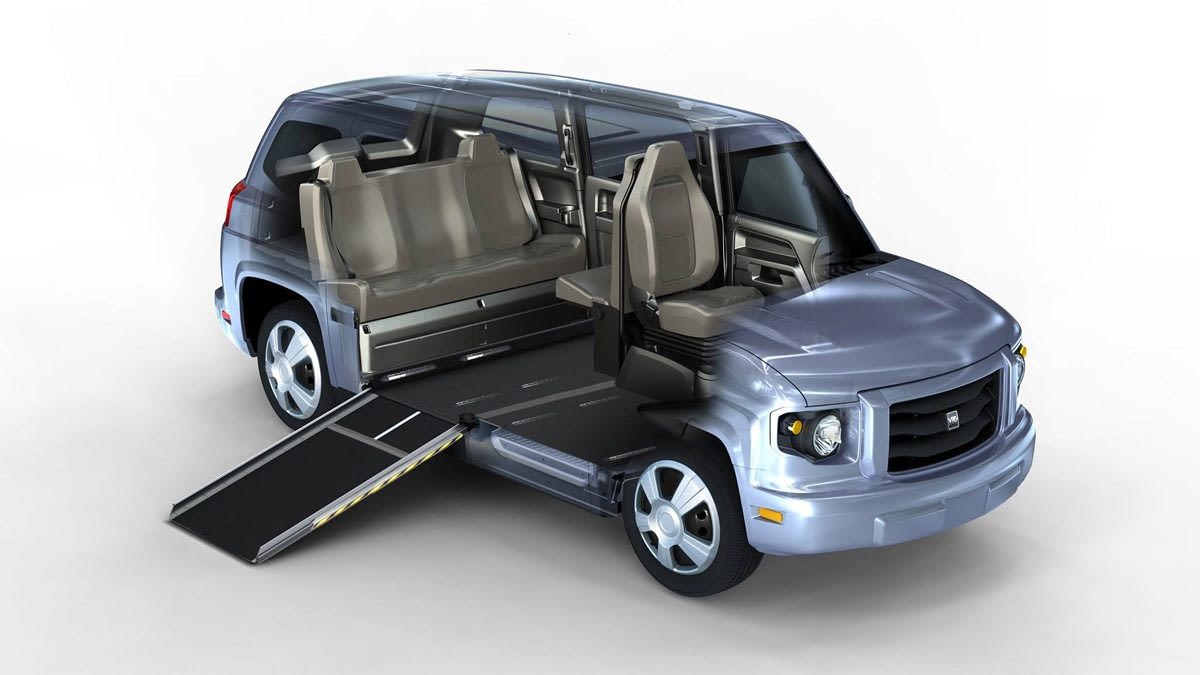
 It’s easy to take being able to drive for granted. But for people whose mobility is limited by a disability, being able to drive can be especially important for maintaining independence, jobs and relationships with friends and family. Fortunately, modifications and enhancements can help make vehicles accessible to the 54 million Americans that the U.S. Census Bureau estimates are living with a disability. And as technology evolves, the options available to drivers with disabilities continue to expand.
It’s easy to take being able to drive for granted. But for people whose mobility is limited by a disability, being able to drive can be especially important for maintaining independence, jobs and relationships with friends and family. Fortunately, modifications and enhancements can help make vehicles accessible to the 54 million Americans that the U.S. Census Bureau estimates are living with a disability. And as technology evolves, the options available to drivers with disabilities continue to expand.
Here are some of the modifications that can help make vehicles more accessible and help people with disabilities navigate the road.
Ramps and Lifts
Drivers using a wheelchair face the challenge of getting the chair – and themselves – into the vehicle. For those who would prefer not to (or are not able to) lift themselves directly from a wheelchair into the driver’s seat, a ramp or lift may be able to help. Ramps and lifts are typically used in minivans or SUVs, often allowing the person to operate the vehicle from their wheelchair instead of needing to move into the vehicle’s driver’s seat. The National Mobility Equipment Dealers Association (NMEDA) says that ramps can be manual or motorized, and tend to be cheaper and take up less space than lifts because they don’t require the electric motors or hydraulic pumps and cylinders. Ramps can be either side-entry (through a side door) or rear-entry (through the back of a van), which may affect where the vehicle can be parked.
Some recent models of accessible vans feature “kneeling” systems, which lower the suspension of the vehicle as the ramp extends, according to the Association for Driver Rehabilitation Specialists (ADED). For reasons of space or convenience, a lift may be a preferable alternative to a ramp. Infinitec explains that different types of lifts can carry either driver and wheelchair (or mobility device), or just the mobility device only. The NMEDA explains that a lift can run on mechanical or electrical power, or even use gravity, although all lifts depend partly on a battery.
Wheelchair Restraints
Many accessible vehicles allow the driver to use their own wheelchair as the driver’s seat, locking the wheelchair in place in the driver’s position, avoiding the need to transfer in or out of the wheelchair, according to the NMEDA. Wheelchair restraints or docking systems can be manual, using tie-downs, or electronic. Manual restraints usually require the assistance of a passenger or caregiver. Electronic restraints use a device fitted to the wheelchair that locks to a device fitted to the floor of the car, the NMEDA explains.
Turning and Motorized Seating
If a driver has the upper body strength to transfer from wheelchair to car seat, but struggles with twisting and maneuvering, a turning seat may be the right choice. Quest, a publication of the Muscular Dystrophy Association, explains that turning seats typically extend all of the way outside the vehicle, lower the person closer to the ground and can make it easier to get in or out of the vehicle. For non-turning seats, motorized controls can still help with seat adjustments, according to the NMEDA. Finding the right vehicle can be a challenge for people with disabilities. The NMEDA has a database of vehicle dealers ready to help
Electronic Control Functions and Other Steering Aids
For drivers whose motor control or upper body strength is limited, a number of modifications may help them drive a vehicle. For those who have difficulty using car keys, quad-key holders or turners can be useful for inserting and turning the key to start the vehicle, says Infinitec. Remote controlled wipers, horns and turning signals can also help reduce the challenges of driving by relocating various controls to one easily reachable location. While automatic transmission minimizes the need to shift gears, some changes of gear may still be needed. Extended gear shifts or button-press gear actuator systems can help, says ADED.
A variety of devices are also available to help steer the vehicle, according to Infinitec. These range from steering knobs to tri-pins (three-pronged grips) to modified-effort steering, which requires less strength to use. Vehicles can also be specially modified to be hand-controlled. For drivers who can’t steer with their hands or arms, a foot-controlled steering wheel can be mounted on the floor.
Sensory Aids
Other types of devices can help drivers with limited sensory perceptions. For example, drivers with hearing loss may benefit from a siren detector, which can pick up high-decibel sound from an ambulance, police car or fire truck and alert them (via visual cues), says Audiology Online. An early-warning system can help all drivers stay safe, but may provide additional help and protection to drivers with sensory impairments. Systems that warn of the risk of collisions ahead, speeding or swerving out of a lane can also help drivers anticipate problems and provide them with ample time to react, explains the ADED.
Infinitec says that drivers with impaired vision may be assisted by bioptics, which feature a small telescope placed on the eye glasses of the driver. Stronger rear and side view mirrors may also be able to assist these drivers, but remember: a driver’s vision must meet the safe, legal standards set by your local department of motor vehicles.
Finding the right vehicle can be a challenge for people with disabilities. However, there are many resources available to help, and the freedom of being able to drive can be incredibly rewarding. The NMEDA maintains a database of accessible vehicle dealers that can help assess drivers’ needs and help get them into the proper vehicle for their needs.
Filed Under: Auto Insurance, Blog, Car Insurance | Tagged With: Accessible Vehicle, Disability, Electronic Control, Motorized Seating, Ramps and Lifts, Sensory Aids, Steering Aids, Wheelchair